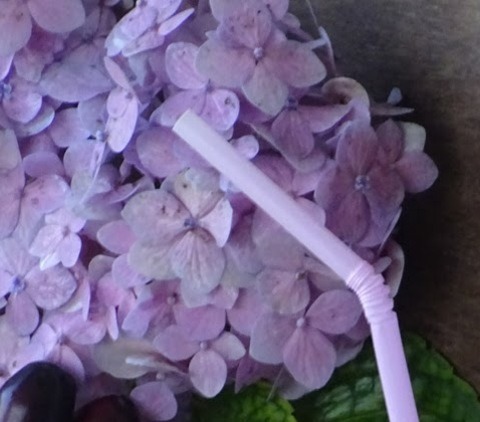#jamun
Explore tagged Tumblr posts
Text
Jamun k Sharbat (Black Plum Juice) Refreshing Drink For Summer
#jamunkseason
#jamunshots
#jamunsharbat
#blackplumjuice
#blackberryjuice
#summerdrink
#summer
#summerrecipes
#viralvideo
#tasty
#food
#trending
#cooking
#foodvideo
#connectofood
#delicious
#recipe
#juice#blackberry juice#thick and juicy#jamun#tasty#cooking#food#connecttofood#jamshedpur#delicious#drinks#summer#summer drinks
3 notes
·
View notes
Text












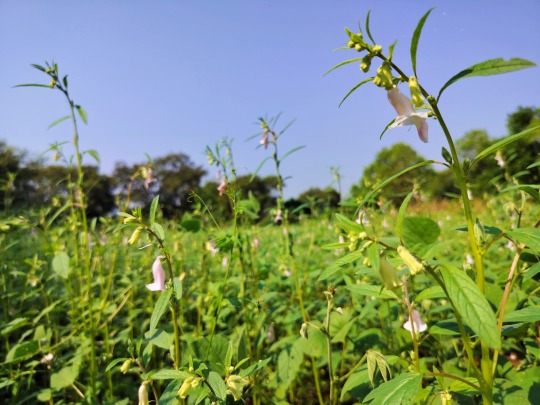


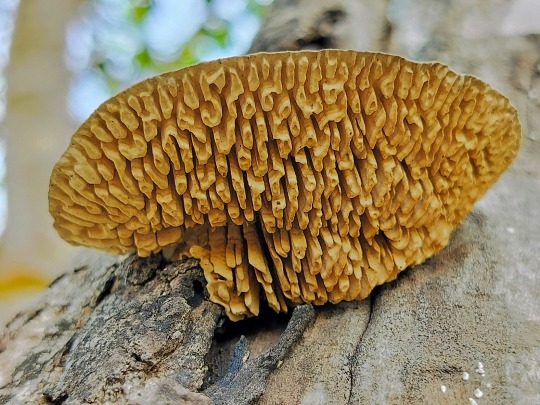


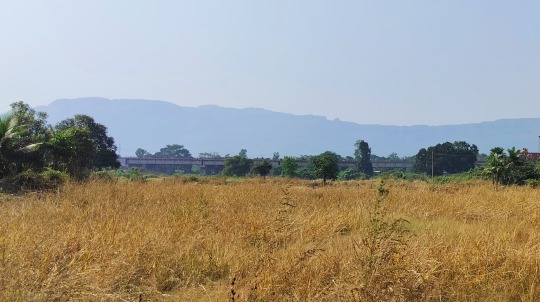



Beauty of JambhulGaon/ Bahadoli in Palghar.
How to reach Bahadoli or JambhulGaon is here.
5 notes
·
View notes
Text


Over 10 years ago I drew this mother naga with her kid and a bowl of gulab jamun, and I was blown away to see people still reblogging it and saying kind things here. I decided to draw a sequel, the PTA (People That are Anacondas) meeting is over, and she finally gets to have some gulab jamun. c: I really hope this cheers you up some.
28K notes
·
View notes
Text
Can Dogs Eat Jamun? A Guide to Treating Your Pup to This Exotic Fruit
When it comes to keeping our canine companions happy and healthy, many of us enjoy sharing a bit of our food with them. Whether it’s a small piece of apple or a few scraps of cooked chicken, we often wonder which human foods are safe for our furry friends. One fruit that might pique your curiosity is jamun. Jamun, also known as Indian blackberry or black plum, is a tropical fruit celebrated for its sweet and tangy flavor. But can dogs eat jamun? Let’s explore this question in detail.
What is Jamun?
Jamun, scientifically known as Syzygium cumini, is a tropical fruit native to the Indian subcontinent. It is known for its deep purple or black color, juicy texture, and unique flavor. Jamun is rich in antioxidants, vitamins, and minerals, which contribute to its reputation as a healthy fruit for humans. It’s commonly enjoyed fresh, as a juice, or even as part of desserts and jams.
Nutritional Benefits of Jamun
For humans, jamun offers several health benefits:
Rich in Antioxidants: Jamun contains anthocyanins, which are antioxidants that help protect the body against oxidative stress and inflammation.
Good Source of Vitamin C: This vitamin is crucial for boosting the immune system and maintaining healthy skin.
Contains Essential Minerals: Potassium, calcium, and iron are among the minerals present in jamun, contributing to overall health and well-being.
Supports Digestive Health: The fiber in jamun aids in digestion and can help with gastrointestinal issues.
Can Dogs Eat Jamun?
When it comes to sharing jamun with your dog, the answer is not entirely straightforward. Here are some important considerations:
Potential Toxicity: Jamun is not known to be highly toxic to dogs, but it does contain compounds that might not be ideal for them. For example, the fruit’s natural sugars and acidic content could potentially lead to digestive upset if consumed in large quantities.
Pits and Seeds: Jamun has large seeds or pits inside, which can pose a choking hazard or cause gastrointestinal blockages if ingested. It’s important to remove these before offering any fruit to your dog.
Moderation is Key: If you decide to give your dog a small amount of jamun, make sure it’s in moderation. Too much fruit, even if it’s safe, can lead to digestive problems such as diarrhea or an upset stomach.
How to Safely Introduce Jamun to Your Dog
If you’re eager to share jamun with your pup, follow these guidelines to ensure it’s done safely:
Consult Your Veterinarian: Before introducing any new food to your dog’s diet, it’s always best to consult with your veterinarian. They can provide personalized advice based on your dog’s health, size, and dietary needs.
Prepare the Fruit: Wash the jamun thoroughly and remove the seeds or pits. Cut the fruit into small, manageable pieces to prevent choking.
Start Small: Begin with a small amount to see how your dog reacts. Watch for any signs of digestive upset, such as vomiting or diarrhea.
Observe Your Dog: Monitor your dog’s reaction to the new fruit. If they show any adverse reactions, discontinue giving jamun and consult your vet if necessary.
Alternative Fruits for Dogs
If you’re concerned about feeding jamun to your dog or if your dog doesn’t seem to enjoy it, there are plenty of other dog-friendly fruits you can try:
Apples: Remove the seeds and core, and offer slices as a crunchy treat.
Blueberries: These small berries are packed with antioxidants and are easy for dogs to digest.
Bananas: Rich in potassium, bananas make a great occasional treat. Just be mindful of the sugar content.
Peaches: Remove the pit before giving peach slices to your dog.
Final Thoughts
Jamun can be a delicious and healthy fruit for humans, but when it comes to our canine companions, it’s best to proceed with caution. While jamun is not highly toxic, its seeds and natural sugars make it a less-than-ideal treat for dogs. If you do choose to offer jamun, do so in moderation and ensure the fruit is properly prepared.
Always prioritize your dog’s health and well-being by consulting with your veterinarian and sticking to dog-friendly fruits and treats. By doing so, you can ensure that your pup enjoys a balanced diet and a happy, healthy life.
0 notes
Text
Neem Karela Jamun Juice for Diabetes: A Natural Remedy for Blood Sugar Control

Diabetes is a chronic condition that affects millions of people worldwide. Managing blood sugar levels is crucial for preventing complications and maintaining overall health. Neem karela jamun juice, a blend of three potent natural ingredients, has gained popularity as a natural remedy for diabetes. This article explores the benefits of neem, karela (bitter melon), and jamun (Indian blackberry) juice, and how it can help control blood sugar levels.
Understanding Neem, Karela, and Jamun
Neem:
Neem, also known as Azadirachta indica, is a tree native to India. It has been used in traditional medicine for centuries due to its antibacterial, antiviral, and anti-inflammatory properties. Neem leaves are particularly beneficial for managing blood sugar levels.
Karela (Bitter Melon):
Karela, or bitter melon, is a tropical vine known for its bitter taste. It is rich in vitamins, minerals, and antioxidants. Bitter melon contains compounds like charantin and polypeptide-p, which have insulin-like effects and can help lower blood sugar levels.
Jamun (Indian Blackberry):
Jamun, also known as Syzygium cumini, is a fruit native to India and Southeast Asia. It is rich in vitamins, minerals, and antioxidants. Jamun seeds contain jamboline, which helps regulate blood sugar levels by converting starch into energy.
Benefits of Neem Karela Jamun Juice for Diabetes
Regulates Blood Sugar Levels:
The combined properties of neem, karela, and jamun help regulate blood sugar levels. Neem enhances insulin sensitivity, karela mimics insulin, and jamun helps convert starch into energy, collectively aiding in blood sugar control.
Improves Insulin Sensitivity:
Neem and karela are known to improve insulin sensitivity. This means that your body can use insulin more effectively, helping to lower blood sugar levels.
Reduces Sugar Cravings:
Regular consumption of neem karela jamun juice can help reduce sugar cravings. The natural compounds in these ingredients can help stabilize blood sugar levels, reducing the urge to consume sugary foods.
Detoxifies the Body:
Neem has detoxifying properties that help cleanse the blood and remove toxins from the body. A detoxified body functions more efficiently, including better blood sugar regulation.
Supports Digestive Health:
Karela is rich in dietary fiber, which aids in digestion and helps prevent blood sugar spikes after meals. Proper digestion and regular bowel movements are essential for managing diabetes.
Rich in Antioxidants:
Jamun is rich in antioxidants that help combat oxidative stress and inflammation, common in people with diabetes. Reducing oxidative stress can improve overall health and prevent complications associated with diabetes.
How to Use Neem Karela Jamun Juice for Diabetes
Dosage:
The recommended dosage is typically 30-50 ml of neem karela jamun juice, consumed once or twice daily. Start with a smaller amount and gradually increase it as your body adjusts.
Best Time to Consume:
For optimal results, drink neem karela jamun juice on an empty stomach in the morning and before meals. This timing helps in better absorption and maximizes its blood sugar-regulating benefits.
Consistency is Key:
Regular consumption is essential to experience the full benefits. Make neem karela jamun juice a part of your daily routine for sustained results.
Tips for Maximizing the Benefits
Balanced Diet:
Complement your juice intake with a balanced diet rich in fruits, vegetables, lean proteins, and whole grains. Avoid processed foods and sugary snacks.
Stay Hydrated:
Drink plenty of water throughout the day to support overall health and detoxification.
Regular Exercise:
Incorporate regular physical activity into your routine to enhance the diabetes-managing effects of neem karela jamun juice.
Monitor Blood Sugar Levels:
Regularly monitor your blood sugar levels to track the effectiveness of neem karela jamun juice and adjust your diet and lifestyle accordingly.
Potential Side Effects and Precautions
While neem karela jamun juice is generally safe, some individuals may experience mild side effects such as digestive discomfort or hypoglycemia (low blood sugar). It is important to start with a small amount and gradually increase it. If you have any underlying health conditions or are taking medications, consult with a healthcare professional before adding neem karela jamun juice to your diet.
Conclusion
Neem karela jamun juice offers a natural and effective way to manage diabetes and control blood sugar levels. Its combined properties of blood sugar regulation, improved insulin sensitivity, and antioxidant benefits make it a valuable addition to a diabetes management plan. By incorporating neem karela jamun juice into your daily routine and maintaining a healthy lifestyle, you can achieve better blood sugar control and overall health.
1 note
·
View note
Text
♡kalo jam♡
heyyyy!
today, we’re diving into the world of Bengali sweets with a classic treat that’s bound to make your sweet tooth sing – Kalo Jam! Think of it as the bigger, bolder cousin of the beloved Rosogolla, with a rich, dark exterior and a syrupy surprise inside.
Step 1: Making the Dough
We’re keeping things simple by using store-bought paneer. Yes, you heard that right – we’re taking a shortcut without sacrificing flavor! But feel free to make your own chana (I have instructions and tips listed in my other recipes).






Crumble the Paneer: Start by crumbling the paneer into a large bowl. You want it to be as fine as possible, so get in there with your hands and make it crumbly and soft. No big chunks allowed!
Add the Ingredients: To the crumbled paneer, add milk powder, ghee (clarified butter), sugar, all-purpose flour, and a pinch of baking powder. These ingredients are the dream team that’s going to turn your paneer into delicious Kalo Jam dough.
3. Knead Away: Now, it’s time to knead! Use your knuckles and create a fist to really pound the dough and make it smooth. This part is like a mini workout, but hey, it’s all worth it for dessert, right? Knead until the dough is smooth and holds together without falling apart.
4. Spice It Up: Since cardamom is my favorite spice, I added some whole cardamom seeds to the dough once I was done kneading. It’s like giving your Kalo Jam a little extra love.
Step 2: Shaping and Frying Now that we’ve got our dough ready, it’s time to shape and fry these beauties.


Shape the Balls: Create slightly large balls from the dough. Kalo Jam is typically pretty big, so don’t be shy. Roll them between your palms until they’re smooth and round.
Heat the Oil: Heat some oil in a deep pan. You want it hot enough to fry the dough balls to a beautiful brown on the outside but not so hot that they burn.


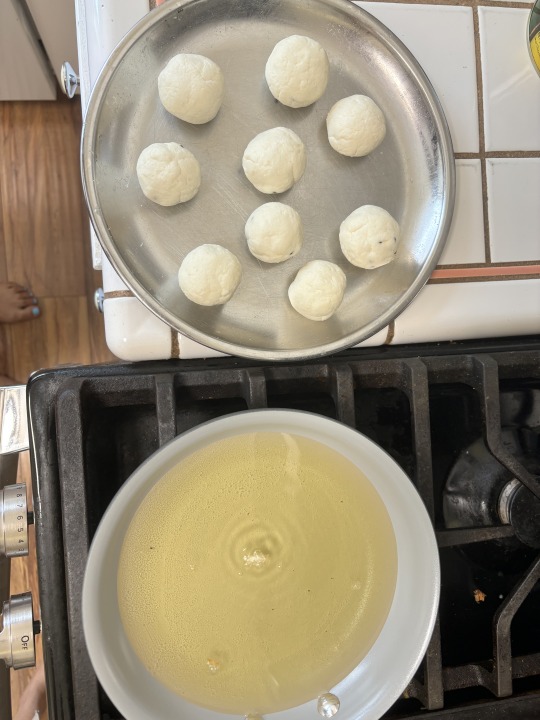
3. Fry Until Golden: Gently drop the dough balls into the hot oil and fry them until they turn a rich brown color on the outside. Keep an eye on them and turn them occasionally to ensure they cook evenly. Once they’re done, remove them from the oil and let them drain on a paper towel (which I forgot haha).




Step 3: Making the Sugar Syrup (Rosh) No Bengali sweet is complete without a luscious sugar syrup. Let’s whip up some rosh to soak our Kalo Jams in.
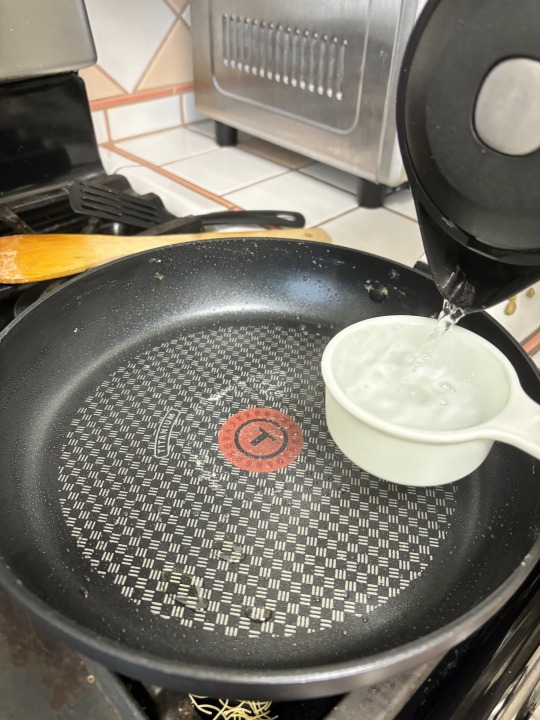


Prepare the Syrup: In a pot, combine water, sugar, saffron, and a splash of rose water. Add some whole cardamom pods for that aromatic touch. Bring it all to a boil and let the sugar dissolve completely.
2. Simmer and Soak: Once the rosh is ready, gently add the fried Kalo Jams into the pot. Let them simmer in the syrup until they’re fully soaked and have absorbed all that sugary goodness. Cover using a lid with a small hole for the air to escape. This is where the magic happens – the Kalo Jams will get soft and juicy on the inside while retaining a good chew on the outside.





Step 4: Presentation Because we eat with our eyes first, let’s make these Kalo Jams look as good as they taste.
Silver Leaf Glam: For a touch of elegance, top your Kalo Jams with silver leaf. It’s like putting a little crown on each one – they deserve it!

2. Serve and Enjoy: Your Kalo Jams are now ready to impress! Serve them warm, and watch as everyone’s eyes light up with delight.
Fun Fact: Kalo Jam gets its name from the dark color it takes on after frying. It literally means "black jamun" in Bengali, named after the fruit that it resembles in color and shape.
And there you have it – a step-by-step guide to making Kalo Jam that’s as fun to make as it is to eat. Whether you’re a seasoned dessert maker or just getting started, this recipe is sure to make you the star of any sweet occasion.
1 note
·
View note
Text
0 notes
Text
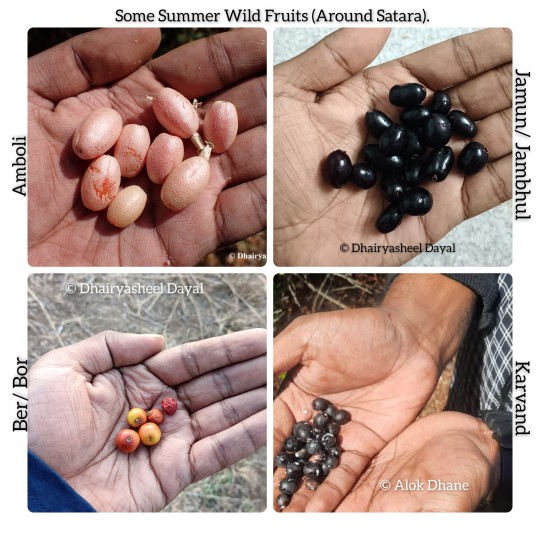
Some Summer Wild Fruits around Satara.
#wildfruit#wildfruits#wild fruit#wild fruits#fruits#fruit#wild edibles#wild#flora#flora of india#flora of maharashtra#botany#satara#summer flora#summer fruit#summer fruits#jamun#jambhul#ber#bor#amboli#karvand#botany photography
1 note
·
View note
Text

0 notes
Text
best gulab jamun mix
Indulge in the authentic flavors of India with our premium "Best Gulab Jamun Mix." Crafted with the finest ingredients and perfected over generations, our Gulab Jamun mix offers the convenience of creating delectable, melt-in-your-mouth desserts in the comfort of your own kitchen.Each package contains a harmonious blend of high-quality ingredients, meticulously measured to ensure consistent results every time you prepare this beloved sweet treat. Simply follow the easy-to-follow instructions, and within minutes, you'll be savoring soft, spongy Gulab Jamuns soaked in aromatic sugar syrup.

0 notes
Text
WindTalkers' 6th century ride in search of 100 year old Jambhul/ Jamun trees!

Sunday 10 December 2023, we four friends cycled or biked to BAHADOLI (famously known as JAMBHULGAON) in Palghar, in search of hundred year old Jambhool/ Jamun (?Syzygium cumini). In their search, we cycled more than hundred kilometres!
The blog post is divided as follows:
Jamuns of Jambhulgaon and their 100 years old Jambhul trees.
Photos en route from sunrise.
Other things in Bahadoli.
Return trip by sunset.

I thought hundred year old living beings would look really old. But no. They look young. Almost unbelievable young and strong. What I realised is we compare their age to humans and since humans look really old even before their 100 and that is why the expectation that they should look really old.
JAMUNS OF JAMBHULGAON & THEIR 100 YEARS OLD TREES:
Now the star of our trip! The trees!


These two may be the original trees in the village, whose seeds, saplings and grafts have spread the Jamun farming in the entire village of Bahadoli , which is now known as JAMBHULGAON.
Here is the link to the article in the newspaper.

We met the villagers in this village, who welcomed us graciously in their home and took us on a tour in their village. They are proud of their efforts. The villagers and the farmers of this village are the real stars, whose efforts have won them the GI tag and their jamun fruits are export quality.



The season for Jamuns is around April-May-June.

The bamboo scaffoldings protect the trees while picking the fruits. The tree and its branches are delicate. Earlier, when the trees were shaken to collect the fruits, they used to get damaged. If someone climbs a branch to collect fruits, the branch breaks. So an innovative solution was found by the villagers. They climb these scaffoldings and pick up the fruits by hand, without harming the trees.



Mohur of the Jamun/ Jambhul trees.
2. PHOTOS EN ROUTE FROM SUNRISE:
Now let us go for a ride.
03:45 wake up alarm. 04:40 start cycling. 05:00 meeting of friends. 09:00 breakfast. 10:30 reach Bahadoli (60 kms cycled). 11:00 to 13:00 guided tour of the village. 15:00 to 16:00 lunch halt at NGO Seva Vivek. 19:15 home sweet home.

The point of the photo is the waning crescent Moon and Venus conjunction, happening behind us.



Sunrise


3. OTHER THINGS IN BAHADOLI:

Entering Bahadoli.



Rice pyramids in Bahadoli with jamun trees around.
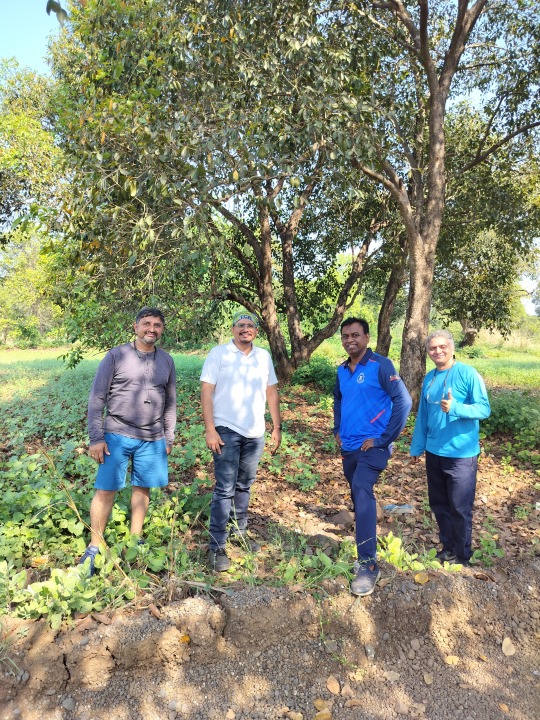

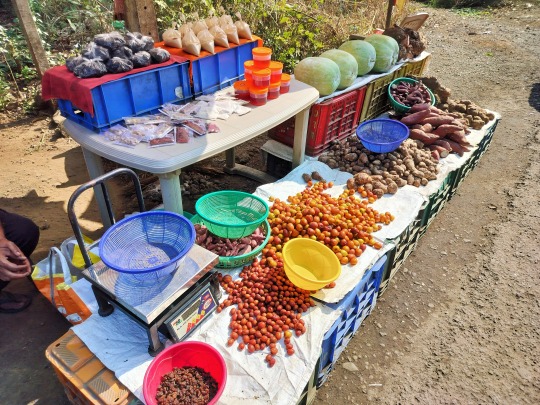
Local produce in the market.
4. RETURN RIDE BY SUNSET:


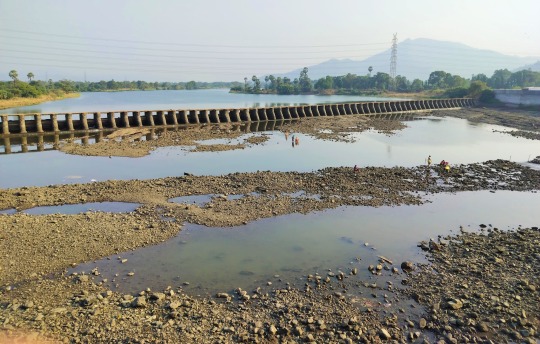
Tansa river.


My friend, PP (Anna), completed his first 100 km cycling ride in this trip!
Many thanks to my friend, Dr JVT, who connected us with the villagers and they welcomed us all, treated to refreshing tea and took on a guided tour of their home and village.
While returning, my cycle's chain malfunctioned and the road-side mechanic solved it using 14 no. pana. We all were home by 19:30. Legs were aching. I was sleepy and dozed off while seeing the photos.
Check this link for more photos and natural beauty of Jambhulgaon here.
For more cycling pleasure with leisure in and around Mumbai - check this link.
#Geographical indications#Jambhul#Jamun#Trees#hundred#100#century#windtalkers#cycling#cyclists#gi tag
0 notes
Text
1 note
·
View note


